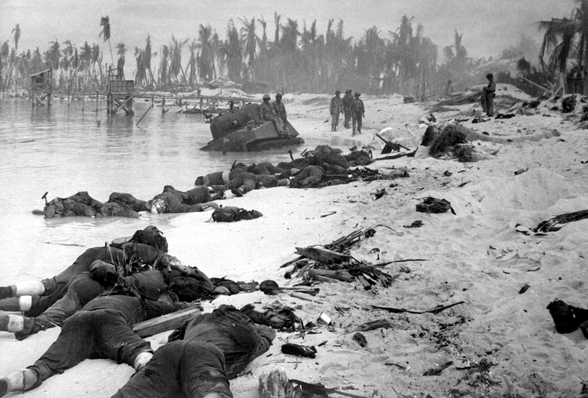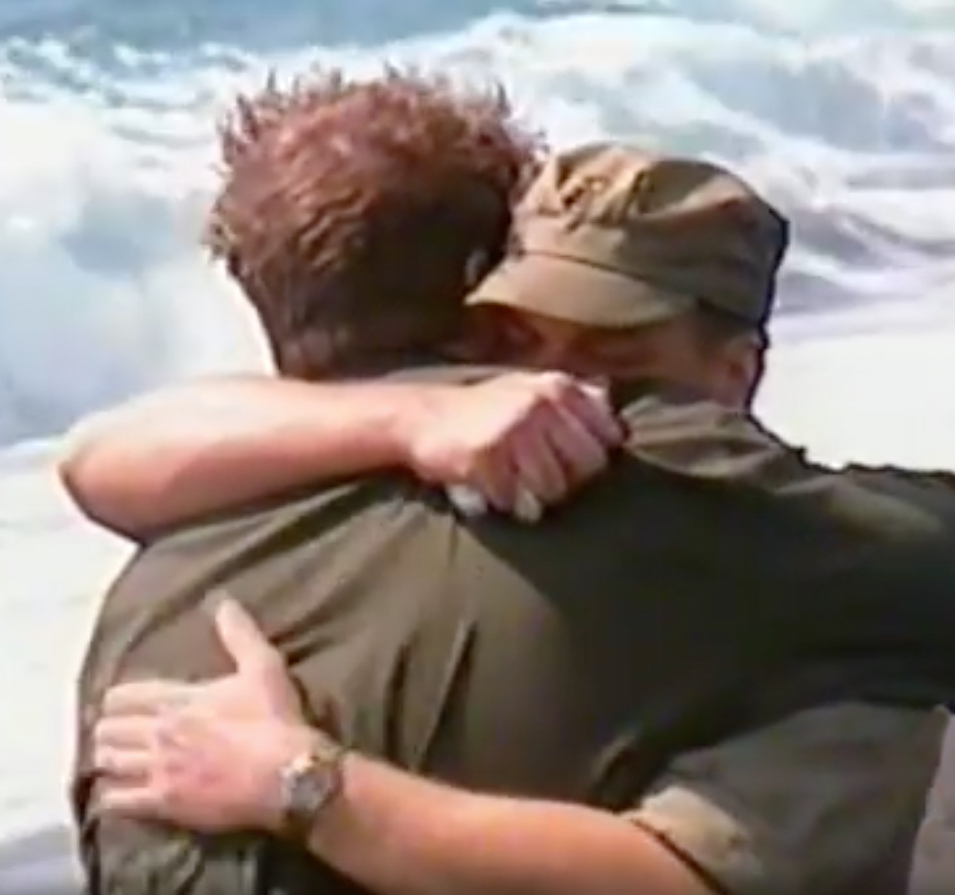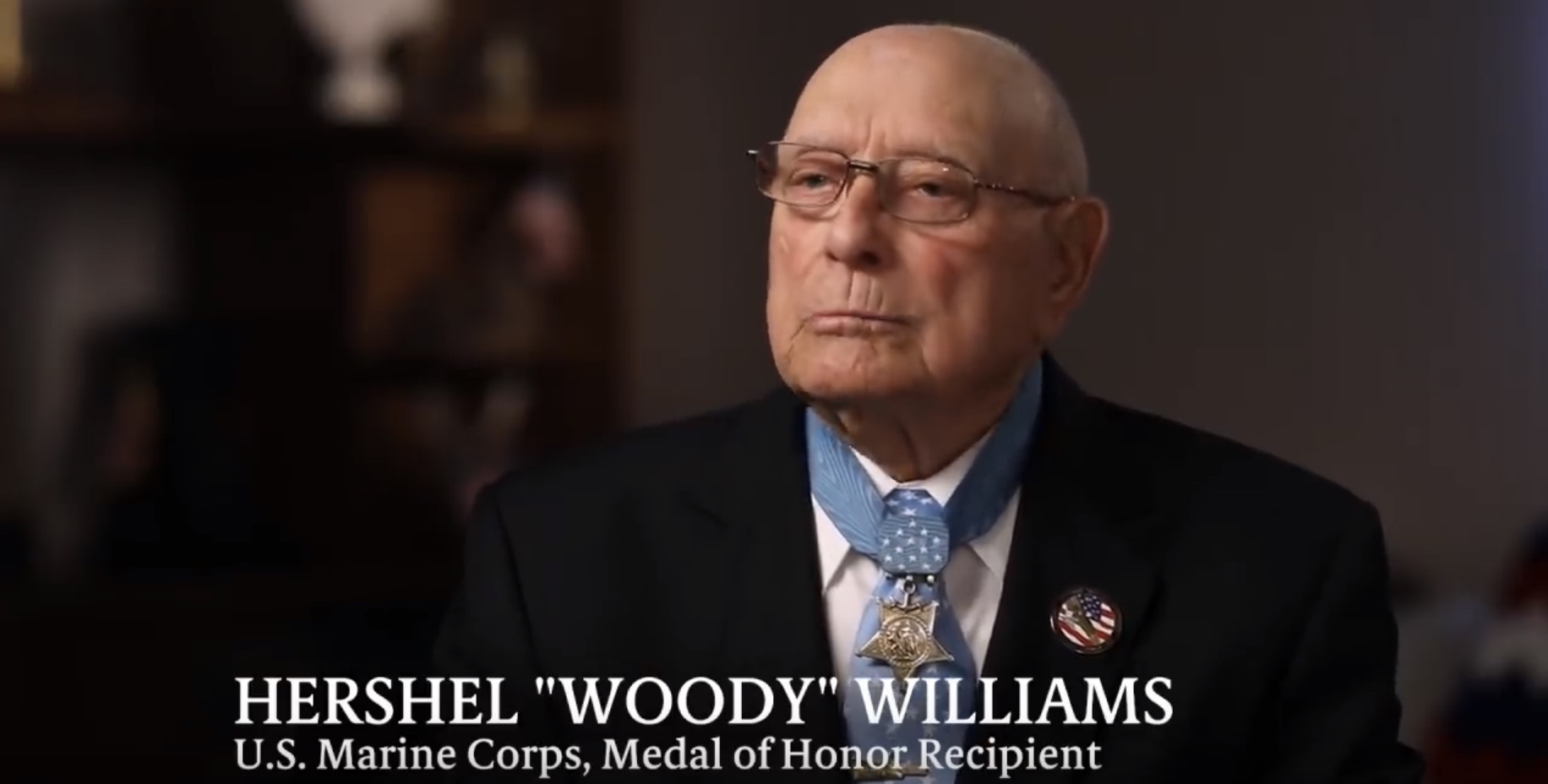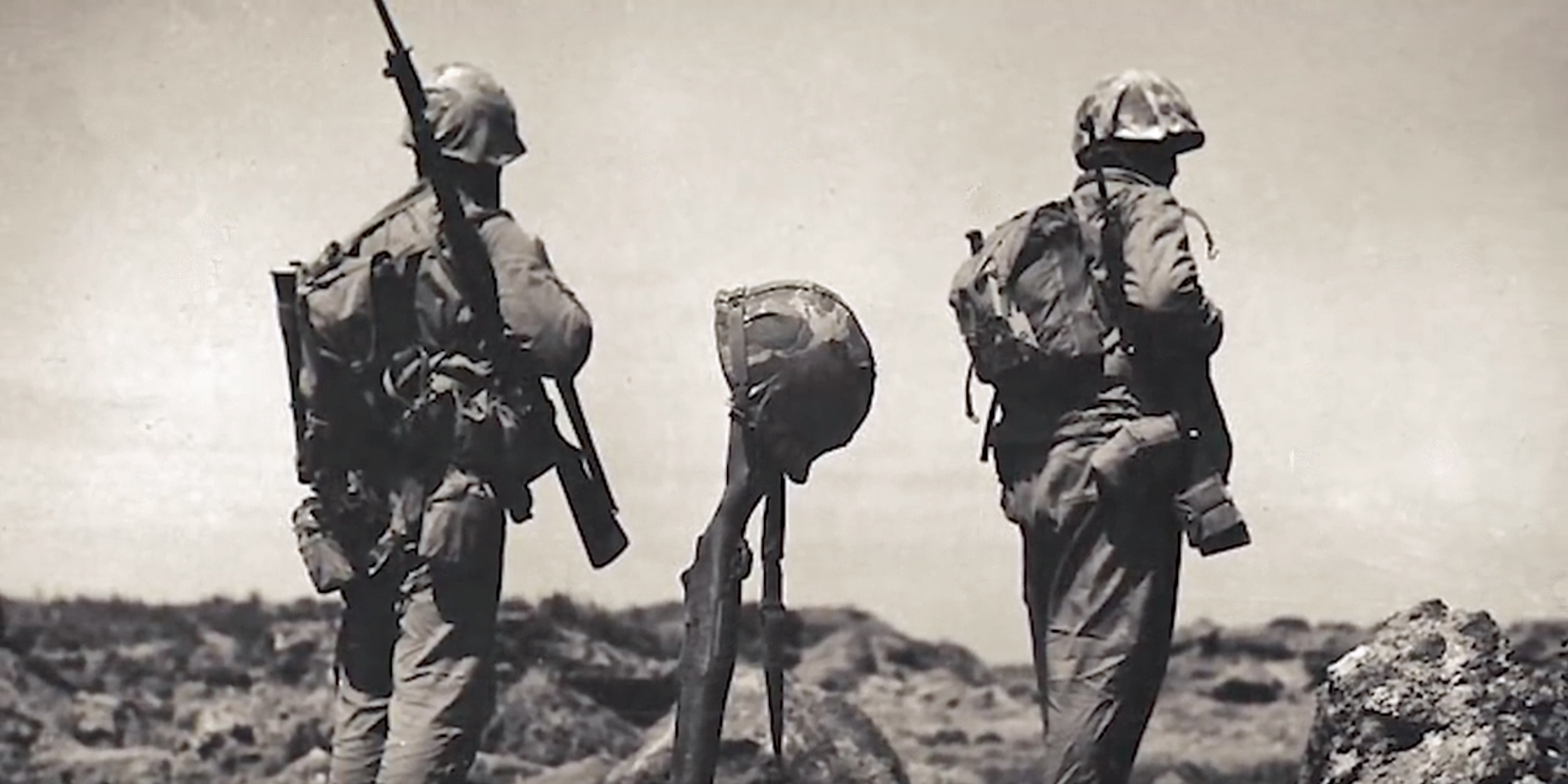

Videos 2

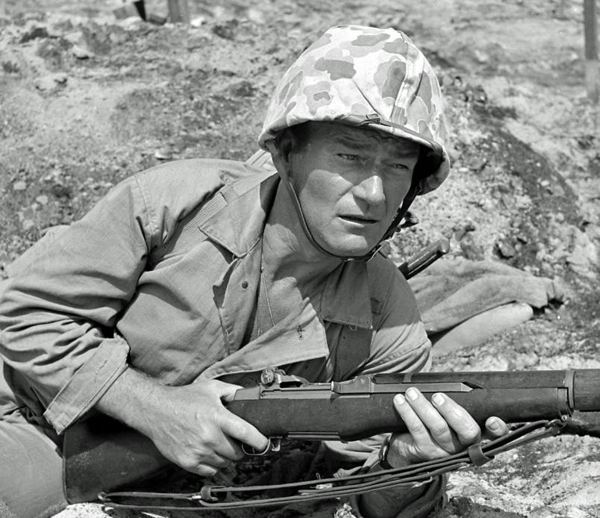
Sands of Iwo Jima is a 1949 war film starring John Wayne that follows a group of United States Marines from training to the Battle of Iwo Jima during World War II.
U.S. Marine Corps
The 20th Century gave us the ability to capture events on film and to visually tell stories, both real (documentaries) and fictional. WWII was the biggest drama of that century and produced a wealth of films.
Every picture tells a story and every page has a theme. This page is focused on the U.S. Marine Corps in the Pacific War.
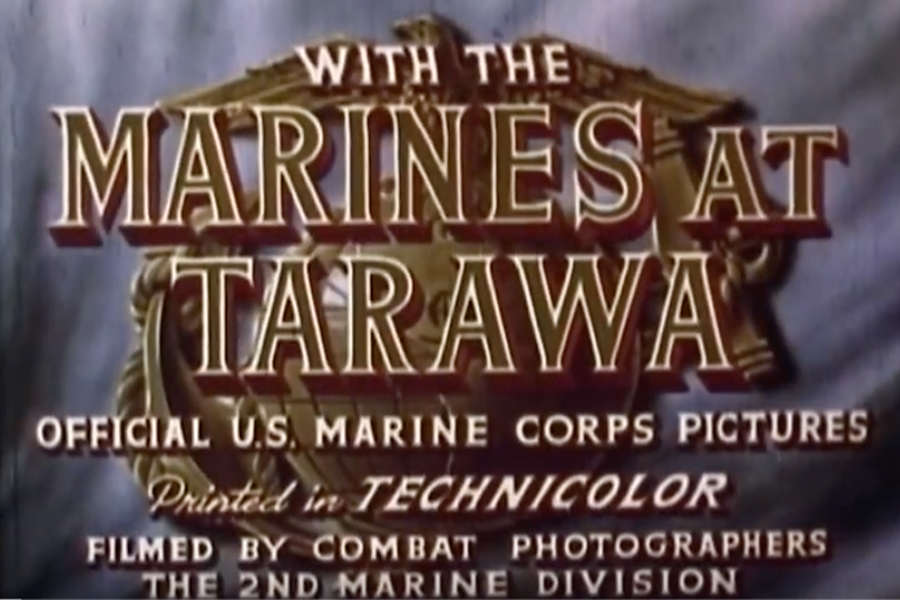
With the Marines at Tarawa
[39:20]
With the Marines at Tarawa is a 1944 short war documentary film directed by Louis Hayward. It used authentic footage taken at the Battle of Tarawa to tell the story of the American servicemen from the time they get the news that they are to participate in the invasion to the final taking of the island and raising of the Stars and Stripes.
The film is in full color and uses no actors, making it a valuable historical document. The documentary showed more gruesome scenes of battle than other war films to date.
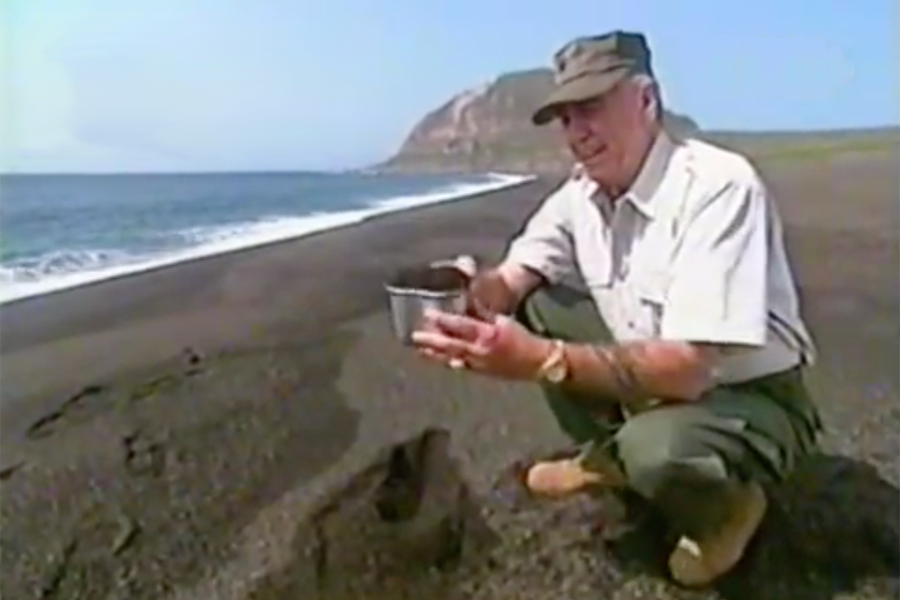
Mail Call with R. Lee Ermey: Iwo Jima Special
[44:53]
Iwo Jima: sixty years [2005] after the most heroic battle in American history. R. Lee Ermey takes his “Roll Call” TV series on a special visit to this Japanese island with a contingent of WWII vets. The trip was conducted by Military Historical Tours.
This is one of the best Roll Calls that Gunny ever did. You visit the locations and then see them as filmed during the invasion. Gunny explains the history as he stands on the beaches or on top of Mt. Suribachi. Then you meet the vets who went on this trip and hear their stories. Two brothers remember a grandfather who died on Iwo Jima and was buried at sea, a grandfather that they had never met. It is very moving.
WW2 Medal Of Honor Recipient Hershel "Woody" Williams
[9:17]
Hershel Woodrow "Woody" Williams (born October 2, 1923) is a retired United States Marine Corps warrant officer and United States Department of Veterans Affairs veterans service representative who received the United States military's highest decoration for valor—the Medal of Honor—for heroism above and beyond the call of duty during the Battle of Iwo Jima in World War II. He and one other soldier are the only living Medal of Honor recipients from that war. In addition, he is the only surviving Marine to have received the Medal of Honor during the Second World War, and is the only surviving Medal of Honor recipient from the Pacific theater of the war.
In this video, he describes the series of events that lead to his being awarded the medal at the Battle of Iwo Jima. On February 21, 1945, he landed on the beach with the 1st Battalion, 21st Marines. Williams, by then a corporal, distinguished himself two days later when American tanks, trying to open a lane for infantry, encountered a network of reinforced concrete pillboxes. Williams went forward alone with his 70-pound (32 kg) flamethrower to attempt the reduction of devastating machine gun fire from the unyielding positions.
Covered by only four riflemen, he fought for four hours under terrific enemy small-arms fire and repeatedly returned to his own lines to prepare demolition charges and obtain serviced flame throwers. He returned to the front, frequently to the rear of hostile emplacements, to wipe out one position after another. At one point, a wisp of smoke alerted him to the air vent of a Japanese bunker, and he approached close enough to put the nozzle of his flamethrower through the hole, killing the occupants. On another occasion, he was charged by enemy riflemen who attempted to stop him with bayonets and he killed them with a burst of flame from his weapon.
These actions occurred on the same day that two flags were raised on Mount Suribachi, and Williams, about one thousand yards away from the volcano, was able to witness the event. He fought through the remainder of the five-week-long battle even though he was wounded on March 6 in the leg by shrapnel, for which he was awarded the Purple Heart.
In September 1945, he returned to the United States, and on October 1 he joined Marine Corps Headquarters in Washington, D.C. He and thirteen other servicemen were presented the Medal of Honor by President Harry S. Truman on October 5, 1945, at the White House.
A Mystery of Iwo Jima Solved: The two Marines that made victory possible
[4:56]
For years, UPS executive Pat O'Leary heard the story of how two marines sacrificed their lives at the Battle of Iwo Jima to protect their friend, fellow marine and Medal of Honor recipient, CPL Hershel “Woody” Williams. Woody never knew the names of the two Marine riflemen who gave their lives to protect him as he took out the enemy pill boxes with his flame thrower.
One researcher dedicated himself to discovering the identities of these two lost Marines. His efforts paid off and Woody was able to feel closure in just knowing their names.
In a touching tribute to these two men, Woody stated: "I have said over and over, many times, that this medal that I wear, I wear in their honor, not mine. So, I consider myself the caretaker of the medal, not the owner."


